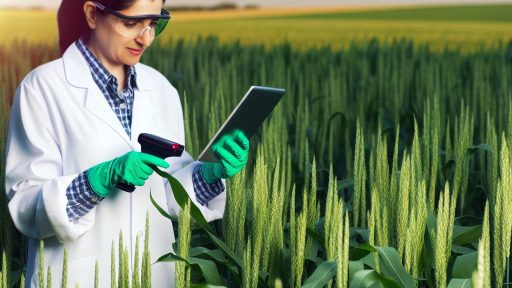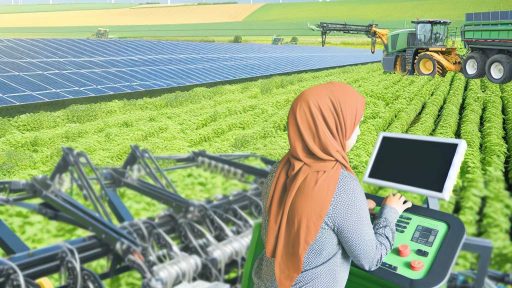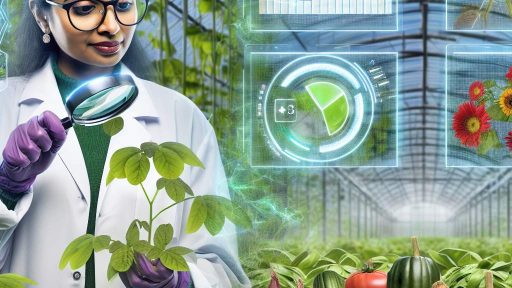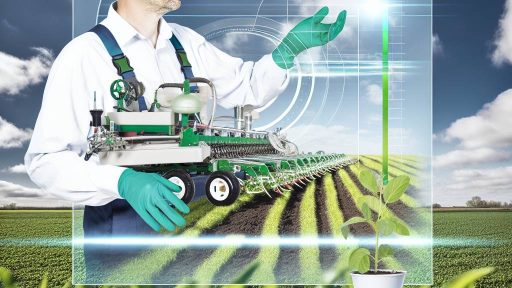Introduction to Controlled Environment Agriculture
Controlled Environment Agriculture, or CEA, revolutionizes modern farming practices.
This innovative technique optimizes plant growth in a regulated environment.
Farmers control essential factors, including temperature, light, and humidity.
As a result, they create ideal conditions for crop production.
This practice significantly improves yield and resource efficiency.
The Importance of CEA in Modern Farming
CEA addresses the challenges of traditional agriculture.
It minimizes the impacts of climate change on crop production.
Additionally, it reduces water usage through precise management.
This method also diminishes the need for pesticides or herbicides.
Consequently, farmers produce healthier and cleaner crops.
Technological Advancements in CEA
Recent innovations drive the growth of Controlled Environment Agriculture.
Automation technologies enhance monitoring and management.
For instance, sensors track environmental conditions in real-time.
This data helps farmers make informed decisions quickly.
Furthermore, indoor vertical farms maximize space utilization.
Transform Your Agribusiness
Unlock your farm's potential with expert advice tailored to your needs. Get actionable steps that drive real results.
Get StartedBenefits of Controlled Environment Agriculture
CEA offers numerous advantages for growers and consumers alike.
- Consistent crop quality and taste.
- Reduced transportation costs through local production.
- Year-round cultivation, independent of seasons.
- Lower energy consumption compared to conventional farming.
Ultimately, CEA creates a sustainable model for future agriculture.
Overview of Controlled Environment Agriculture Technologies
Understanding Hydroponics
Hydroponics is a method of growing plants without soil.
Instead, it uses nutrient-rich water to nourish the plants.
This system allows for efficient water usage.
Moreover, it can accelerate plant growth significantly.
Hydroponics minimizes the risk of soil-borne diseases.
Thus, it promotes healthier plant development.
Today, many commercial farms adopt hydroponics for various crops.
Exploring Aquaponics
Aquaponics combines hydroponics with aquaculture.
It uses fish waste as fertilizer for the plants.
This creates a symbiotic relationship between fish and plants.
Both systems benefit from nutrient recycling.
Moreover, aquaponics utilizes less water compared to traditional farming.
This method produces both protein and vegetables sustainably.
Several startups are successfully implementing aquaponics today.
Diving into Aeroponics
Aeroponics is another innovative growing technique.
This method involves suspending plants in the air.
Additionally, nutrient mist is delivered to the roots.
Aeroponics maximizes oxygen exposure and nutrient absorption.
Moreover, it uses significantly less water than traditional soil methods.
This technique accelerates growth and yields superior quality crops.
Many researchers are exploring aeroponics for urban farming applications.
Comparison of CEA Technologies
Each CEA system has distinct advantages and challenges.
Showcase Your Farming Business
Publish your professional farming services profile on our blog for a one-time fee of $200 and reach a dedicated audience of farmers and agribusiness owners.
Publish Your Profile- Hydroponics is highly versatile and widely used.
- Aquaponics creates a sustainable ecosystem but requires more management.
- Aeroponics offers high efficiency but may involve greater initial investment.
Choosing the right system depends on specific farming needs and goals.
Benefits of Controlled Environment Agriculture in Enhancing Crop Production Efficiency
Resource Conservation
Controlled Environment Agriculture (CEA) optimizes resource use effectively.
It minimizes water consumption significantly compared to traditional methods.
Through precise monitoring, CEA reduces nutrient waste.
Innovative systems recycle water and nutrients sustainably.
This approach enhances soil conservation practices.
Moreover, CEA utilizes advanced technologies to conserve energy.
Smart climate control systems maintain optimal growing conditions.
Yield Maximization
CEA promotes enhanced crop yields beyond conventional agriculture.
This method allows for year-round production cycles.
With ideal conditions, crops grow faster and healthier.
Additionally, CEA reduces the impacts of pests and diseases.
Controlled environments limit harmful insects effectively.
As a result, farmers achieve more reliable harvests.
CEA enables the cultivation of high-value crops in diverse locations.
Improved Crop Quality
Crops grown in CEA systems often exhibit superior quality.
This technique enhances flavor, color, and nutritional value substantially.
Varieties flourish with customized growth parameters.
The absence of environmental stressors contributes to enhanced quality.
Market Demand Response
CEA offers flexibility in meeting market demands efficiently.
Farmers can quickly adjust crop types based on consumer preferences.
This adaptability leads to higher profitability for growers.
In addition, CEA supports local markets by reducing transportation needs.
Fresh produce reaches consumers faster, ensuring peak freshness.
Innovation and Technology Integration
CEA integrates cutting-edge technologies for improved efficiency.
Automation systems support labor efficiency and reduce costs.
Data analytics optimize resource allocation and crop management.
Additionally, sensor technology monitors plant health continuously.
Such innovations drive advancements in agricultural practices.
Gain More Insights: Organic Pest Control Innovations Promoting Eco-Friendly Farming
Analysis of Environmental Control Factors
Temperature Management
Temperature significantly influences plant growth and productivity.
Controlled Environment Agriculture (CEA) allows precise temperature regulation.
Maintaining optimal temperatures enhances crop yield and quality.
For instance, most crops thrive between 20°C and 25°C.
Excess heat can stress plants, reducing photosynthesis rates.
Additionally, nighttime temperatures play a crucial role in growth.
Farmers can utilize technology for real-time temperature monitoring.
Humidity Levels
Humidity is another critical environmental factor.
High humidity can encourage diseases like powdery mildew.
Conversely, low humidity can cause stress and wilting.
Showcase Your Farming Business
Publish your professional farming services profile on our blog for a one-time fee of $200 and reach a dedicated audience of farmers and agribusiness owners.
Publish Your ProfileImplementing dehumidification systems can mitigate these risks.
Balancing humidity improves nutrient uptake in plants.
Using sensors, farmers can maintain ideal humidity parameters.
Light Optimization
Light is essential for photosynthesis and growth.
CEA systems often use LED technology for optimal light quality.
Adjusting light intensity and duration directly affects yield.
Different crops have unique light requirements.
For example, leafy greens typically require less intense light.
Organizing light schedules enhances energy efficiency in greenhouses.
CO2 Levels
Carbon dioxide is vital for photosynthesis.
Enhancing CO2 levels can significantly increase growth rates.
Controlled environments can elevate CO2 concentration for optimal growth.
Regular monitoring ensures that plants receive adequate CO2.
This practice can lead to remarkable improvements in productivity.
Farmers should integrate CO2 enrichment systems into their operations.
Explore Further: Understanding Modern Crop Disease Detection Technologies For Sustainable Farming
Integration of Automation and IoT in CEA for Improved Management and Monitoring
Role of Automation in Controlled Environment Agriculture
Automation significantly enhances operational efficiency in CEA settings.
It reduces labor costs while increasing productivity.
Automated systems manage climate controls, irrigation, and nutrient delivery.
Consequently, these systems ensure optimal growing conditions for crops.
Benefits of IoT in CEA
The Internet of Things (IoT) offers real-time data collection and analysis.
IoT devices monitor environmental factors, such as temperature and humidity.
They provide insights for timely decision-making on crop management.
Additionally, IoT enhances traceability in agricultural practices.
Improving Monitoring Capabilities
Smart sensors track plant growth metrics consistently.
These sensors transmit data to centralized systems for analysis.
Users can access this information remotely, promoting proactive management.
Furthermore, data-driven insights help identify potential issues early.
Case Studies and Real-World Applications
Successful examples illustrate the effectiveness of automation in CEA.
Agritek Innovations uses automation to maximize yield in greenhouses.
Similarly, EcoFarm employs IoT to fine-tune their irrigation systems.
These companies have achieved significant reductions in resource wastage.
Future Trends in CEA Automation and IoT
The future of CEA includes more integrated automation systems.
Emerging technologies will facilitate advanced data analytics.
Ultimately, these innovations will refine crop production processes.
Moreover, sustainability will remain a key focus in future developments.
You Might Also Like: Overcoming Challenges With Genetically Modified Crop Adoption
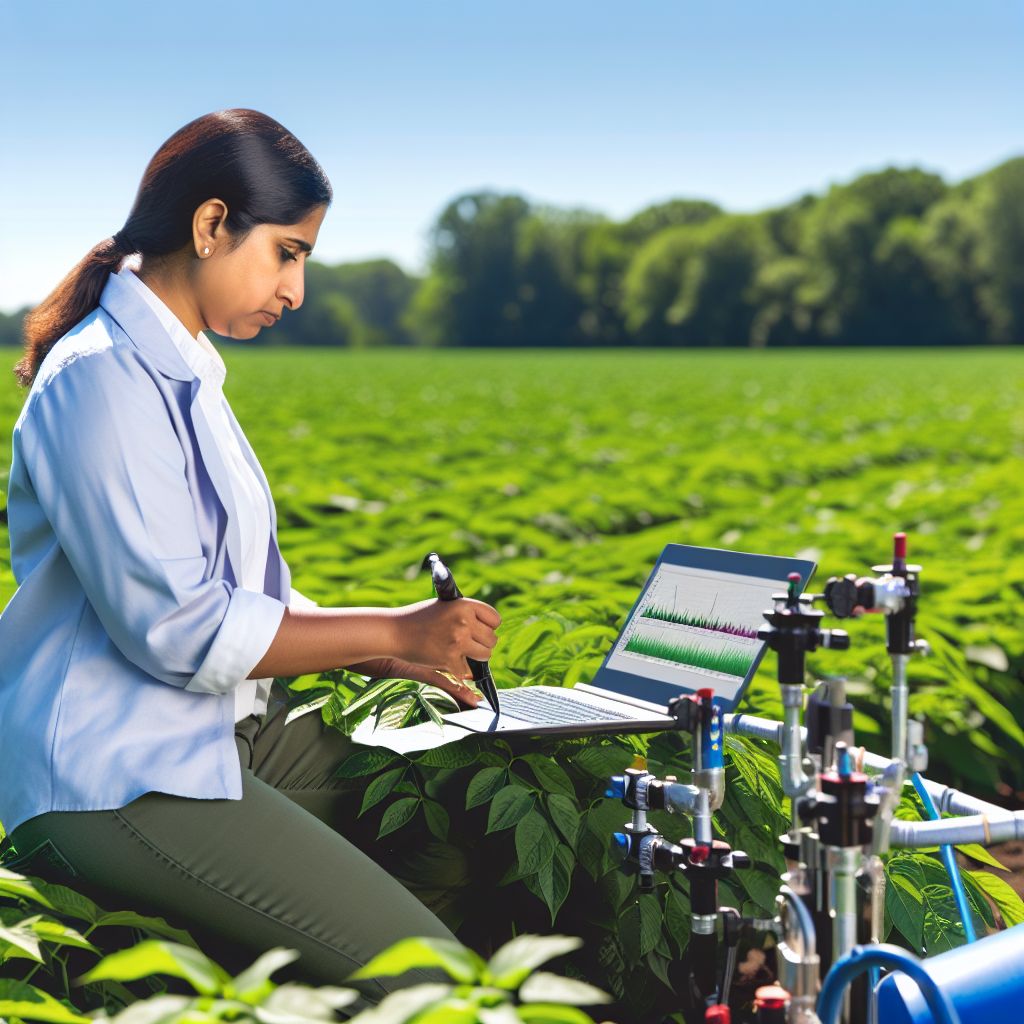
Case Studies of Successful CEA Implementations
Urban Agriculture in Atlanta
The City of Atlanta embraced controlled environment agriculture to tackle food deserts.
One project, Greenhouse Atlanta, started in 2020 and transformed a vacant lot.
This initiative now produces fresh vegetables year-round.
Showcase Your Farming Business
Publish your professional farming services profile on our blog for a one-time fee of $200 and reach a dedicated audience of farmers and agribusiness owners.
Publish Your ProfileBy providing local produce, it enhances community health and reduces food miles.
Vertical Farming in New York City
New York City is home to several vertical farms that optimize space usage.
AeroFarms, established in 2015, utilizes aeroponic technology for crop growth.
This method reduces water usage by up to 95% compared to traditional farming.
Additionally, it provides jobs and supports local economies.
Greenhouses in Rural California
In California, sustainable greenhouse operations have increased crop yield significantly.
Sunrise Greenhouses implemented advanced climate control technologies.
The result presented was a 30% increase in tomato production over the growing season.
This model shows the benefits of investing in technology for local farmers.
Impact on Local Food Production
Controlled environment agriculture contributes positively to local food security.
By providing fresh produce, it reduces dependency on imported goods.
Moreover, CEA promotes biodiversity as it allows diverse crops to thrive.
Consequently, communities can enhance cultural ties through diverse food options.
Increasing Community Engagement
Success stories like these inspire local communities to engage in agriculture.
Educational programs accompany many CEA projects, teaching sustainable practices.
This knowledge empowers individuals to grow their own food.
Ultimately, it strengthens community ties and fosters collaboration.
Learn More: Sustainable Livestock Management Systems Improving Farm Productivity
Challenges and Limitations of Controlled Environment Agriculture
Financial Costs
One significant challenge of controlled environment agriculture is its financial cost.
Setting up these systems requires substantial initial investment.
Factors such as equipment, technology, and maintenance contribute to this expense.
For instance, climate control systems and high-tech sensors can be expensive to install.
Moreover, ongoing operational costs can strain smaller farms.
Thus, achieving profitability can be challenging for many growers.
Energy Consumption
Energy consumption poses another critical issue in controlled environment agriculture.
These systems require significant energy to maintain optimal growing conditions.
Heating, cooling, and lighting systems often operate continuously.
As a result, energy bills can escalate rapidly during the growing season.
Additionally, reliance on non-renewable energy sources raises sustainability concerns.
Farmers must explore renewable energy options to mitigate this impact.
Technological Complexity
The complexity of technology can be daunting for new users.
Advanced systems require specialized knowledge for efficient operation.
This learning curve can hinder adoption among traditional farmers.
Furthermore, troubleshooting technical issues can be time-consuming.
Investing in staff training adds to the overall costs.
Environmental Impact
While controlled environment agriculture aims to reduce environmental impact, it’s not without drawbacks.
For instance, some systems excessively consume resources.
The use of synthetic nutrient solutions raises questions about long-term sustainability.
Moreover, disposal of these materials can pose challenges.
Farmers must seek eco-friendly alternatives to minimize adverse effects.
Showcase Your Farming Business
Publish your professional farming services profile on our blog for a one-time fee of $200 and reach a dedicated audience of farmers and agribusiness owners.
Publish Your ProfileFuture Trends in Controlled Environment Agriculture
Technological Innovations
Emerging technologies are transforming controlled environment agriculture (CEA).
Automation plays a crucial role in enhancing efficiency.
Robotic systems help in planting, monitoring, and harvesting crops.
Additionally, AI-driven algorithms optimize growth conditions.
These innovations lead to higher yields with lower resource consumption.
Sustainability Practices
Future CEA systems focus on sustainability as a core principle.
Closed-loop water systems greatly reduce waste.
Using renewable energy sources minimizes carbon footprints.
Moreover, vertical farming enhances space utilization significantly.
These practices collectively contribute to environmental preservation.
Integration with Smart Technologies
The integration of IoT devices will enhance data collection in CEA.
Real-time monitoring ensures optimal plant health management.
Furthermore, predictive analytics enables proactive environmental adjustments.
This integration fosters a more responsive agricultural approach.
Collaboration Across Industries
Future trends indicate increasing collaboration between stakeholders.
Researchers, farmers, and tech companies will work closely together.
This collaboration aims to develop innovative CEA solutions.
Shared knowledge accelerates advancements in agricultural practices.
As a result, CEA becomes more efficient and sustainable over time.
Economic Implications
The economic landscape of agriculture is changing with CEA.
Urban farming initiatives create jobs and boost local economies.
Additionally, reduced transportation costs enhance food affordability.
Moreover, year-round production stabilizes market supply.
This shift promises to mitigate food insecurity in urban areas.
Consumer Trends
Consumer preferences increasingly favor locally grown produce.
The demand for organic and sustainably sourced food is rising.
CEA aligns perfectly with these consumer trends.
As a result, more companies are investing in controlled environments.
This approach responds to the growing market for fresh produce.
Additional Resources
Georgia Center of Innovation | Agricultural Technology Expertise

